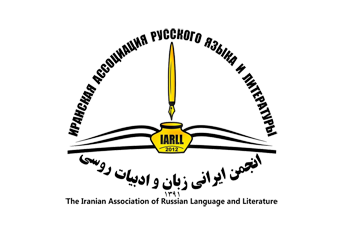K.F. NEKRASOV: “MY WALK THROUGH PERSIA WAS EXTREMELY SUCCESSFUL AND INTERESTING”
DOI:
https://doi.org/10.61186/iarll.25.2Keywords:
Persia, Iran, Persian Miniatures, Collector, K.F. Nekrasov, Tehran, Isfahan, Museum of the EastAbstract
Many poets and artists of the Silver Age fell under the spell of the East. Book publisher and collector Konstantin Fedorovich Nekrasov (1873-1940), nephew of the poet N.A. Nekrasov, also did not escape this fate. It was his collection of Persian porcelain, dishes, tiles, manuscripts and miniatures that formed the basis of the museum created in 1918 in Moscow by the young Soviet government - Ars Asiatica, which is today known throughout the world as the State Museum of the East. But it was only by the 100th anniversary of the Museum of the East, in 2018, that it was possible to prove the authorship of the collection, its belonging to K.F. Nekrasov. This was done thanks to archival documents - letters from K.F. Nekrasov and the later discovered Persian travel diary, in which Nekrasov describes how they traveled from Tehran to Isfahan, how they visited excavations in Rey, how they were received at the consulates. The diary is kept in the Russian State Archive of Literature and Art in the collection of the Russian poet N.A. Nekrasov, the publisher's uncle, and, most likely, for this reason, it was not known to researchers of the East. The diary contains many names of those with whom Nekrasov traveled through Persia. Andrei Andreevich Balakin, a translator and great expert on the East, and David Abelov, who served in Tehran, are mentioned. The Persian diary of K.F. Nekrasov is a sincere view of a Russian traveler of the early twentieth century on the Persian land, its unique history, culture and people.
Extended abstract:
The allure of the East captivated not only poets and artists of Russia’s Silver Age but also prominent cultural figures such as Konstantin Fyodorovich Nekrasov (1873–1940), a renowned publisher and collector of Eastern antiquities. Nekrasov’s publishing house collaborated with many notable poets and writers of the era, but his closest partnership was with Pavel Pavlovich Muratov, an art critic and author of the celebrated *Images of Italy*. Muratov, who can be considered the ideological force behind the publishing house, played a pivotal role in shaping Nekrasov’s interest in the East. It was under Muratov’s initiative and editorship that Nekrasov’s publishing house released its first book: the Arabian fairy tale *Vathek* by W. Beckford, accompanied by Muratov’s insightful introduction.
Nekrasov’s initial curiosity about the East evolved into a profound passion for Oriental art, eventually leading him to become a dedicated collector. In early 1914, he announced plans for an expedition to Persia, specifically to acquire miniatures. Despite the public’s limited understanding of such art at the time, Nekrasov was confident that interest would grow. His journey began in April 1914, taking him to the ancient city of Rey, located near Tehran, and later to Isfahan. During this expedition, Nekrasov immersed himself in Persian culture, visiting archaeological sites, acquiring rare artifacts, and building connections with local antiquarians. His letters and travel diary provide vivid accounts of his experiences, including his interactions with key figures such as Andrei Balakin, a translator and Oriental expert, and David Abelov, a Tehran-based intermediary who facilitated Nekrasov’s negotiations with Iranian antiquarians.
The artifacts Nekrasov collected during this journey—Persian porcelain, tableware, tiles, manuscripts, and miniatures—formed the foundation of what would later become the Ars Asiatica Museum. Established in Moscow in 1918 by the Soviet government, this institution is now globally recognized as the State Museum of the East. However, for nearly 80 years, the origins of the collection and Nekrasov’s role as its creator remained obscured. It was only in 2018, on the museum’s 100th anniversary, that Nekrasov’s authorship of the collection was definitively proven. This breakthrough was made possible through archival documents, including Nekrasov’s letters and his recently discovered *Persian Travel Diary*.
The reasons for this long period of obscurity are multifaceted. Pavel Muratov, who played a key role in transferring Nekrasov’s collection to the Ars Asiatica Museum, had been in exile since 1922. Nekrasov himself died unexpectedly in 1940, leaving no opportunity to pass on his legacy or family secrets. Additionally, his travel diary was stored in the TsGALI archive within the collection of his uncle, the poet Nikolai Alekseevich Nekrasov, a repository rarely accessed by Orientalists. As a result, even as late as 1997, Nekrasov’s identity remained a mystery, as evidenced by the catalog *Moscow Collectors of Oriental Art*, which described him as an enigmatic figure with no known occupation or clear connection to his collecting activities.
Today, Nekrasov’s collection stands as a testament to his visionary passion for Eastern art and culture. It remains a cornerstone of the State Museum of the East, offering invaluable insights into the rich artistic heritage of Persia and the enduring fascination it held for Russian intellectuals of the early 20th century.
Downloads
Published
How to Cite
Issue
Section
License
Copyright (c) 2025 Issledovatel'skiy Zhurnal Russkogo Yazyka I Literatury

This work is licensed under a Creative Commons Attribution 4.0 International License.
![]()
"Creative Commons Attribution 4.0 International (CC-BY 4.0)"


